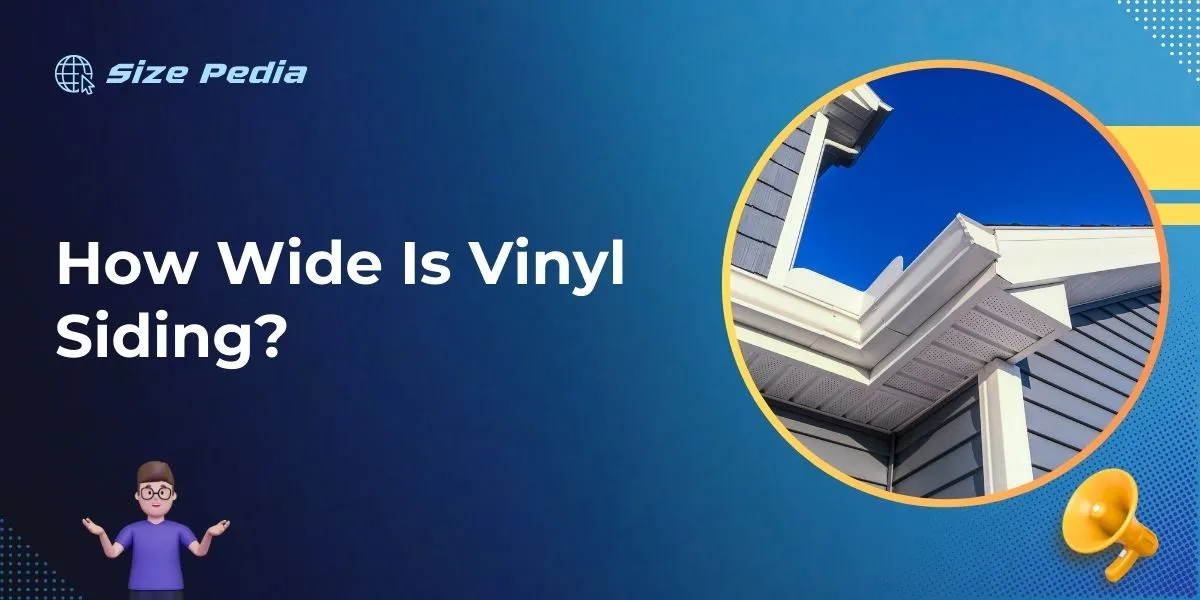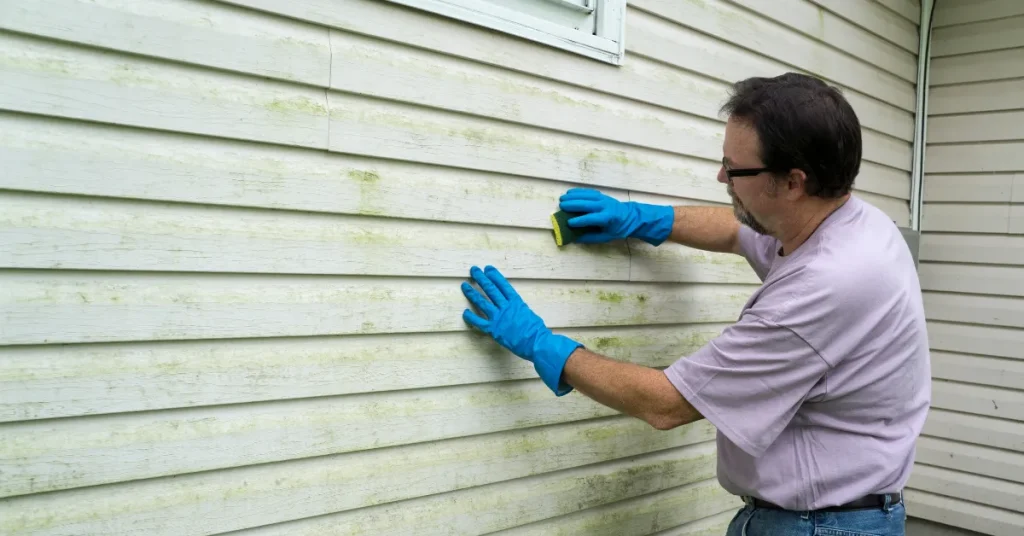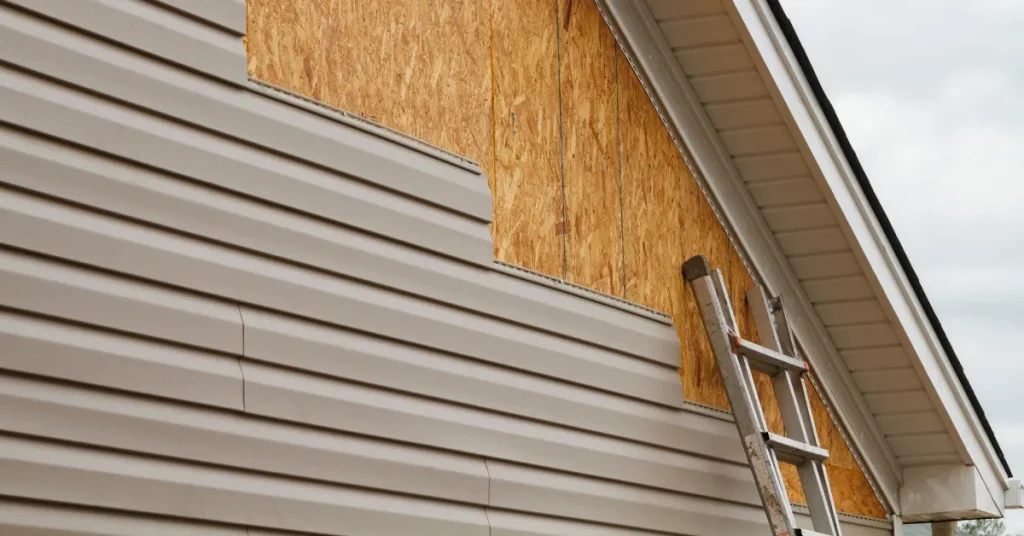Standard vinyl siding panels typically measure 8 inches wide. Some styles can range from 6 to 10 inches in width.
Choosing the right siding for your home involves knowing about the available options and their dimensions. Vinyl siding offers ease of maintenance and a wide variety of styles to enhance a home’s exterior.
Its standard width plays a critical role in the aesthetics and installation process, affecting the number of panels needed and the overall exterior appearance.
Durability and cost-effectiveness make vinyl a popular choice among homeowners. Understanding the typical sizes helps in effectively planning for home renovations or new construction projects, ensuring proper fit and finish.
By selecting a width that complements your home’s design, you can achieve both appealing looks and long-lasting performance.

Introduction To Vinyl Siding
Imagine a material that wraps your house in durability–that’s vinyl siding. This exterior option provides a fresh look with minimal fuss.
Homes across the country choose this path for an easy-care facade. Let’s dive into what makes vinyl siding a choice worth considering.
Popularity And Benefits
What’s behind vinyl siding’s big crowd of fans? Here are quick bullet points:
- Style range: It comes in colors and textures for any design dream.
- Cost-effective: Save money now and on upkeep later.
- Energy saver: Keep heat in or out, clipping your energy bills.
- Long life: It stands up to sun, rain, wind, and time.
Key Characteristics
| Characteristic | Description |
| Width | Typical vinyl siding is about 8 inches wide. |
| Length | Panels often run 12 to 16 feet long. |
| Thickness | It can range from 0.035 to 0.055 inches. |
Standard Measurements Of Vinyl Siding
Choosing the right vinyl siding for a home is crucial. The dimensions affect not only appearance but installation and durability. Below, explore the typical sizes available, understanding how to best suit your project.
Typical Width Ranges
Vinyl siding comes in various widths to give homes a distinct look. Find the common sizing below:
- Double 4-inch – mimics wood siding with two 4-inch boards side by side.
- Double 5-inch – for a broader panel, this siding style is a popular choice.
- Triple 3-inch – consists of three narrower boards, offering a unique profile.
All these options factor into the aesthetic and functionality of vinyl siding on a home.
Length And Thickness Variations
Vinyl siding’s length and thickness significantly impact its performance and ease of installation. Understand the typical specs:
| Standard Length | Typical Thickness |
| 12 feet | 0.035 – 0.055 inches |
Different lengths may be available for special situations. Thickness dictates durability and resistance to impact.
Factors Influencing Vinyl Siding Dimensions

Choosing the right vinyl siding involves many factors. Size matters a lot. Different homes need different vinyl siding sizes. Let’s explore what changes these measurements.
Architectural Design Considerations
Every building is unique. Its style impacts vinyl siding dimensions. Think about these points:
- Home size: Bigger homes might need longer panels.
- Shape: Houses with complex shapes may require custom widths.
- Historical look: Old-style homes often use narrower siding to stay true to their era.
- Visual appeal: Some designs call for varied widths to create patterns or accents.
Manufacturers’ Specifications
Producers of vinyl siding offer various sizes. Standards exist, but companies might tweak them. Check these details:
| Standard Lengths | Typical Widths | Thickness |
| 12 feet | 4 to 10 inches | 0.040 to 0.046 inches |
| 16 feet | Custom widths also available | Some premium options offer higher thickness |
Remember to check the product specs. This includes the length, width, and thickness. Your choice should fit your design needs and weather conditions.
Installation Implications
Thinking of installing vinyl siding? The width of the vinyl siding can greatly influence the project. Knowing the siding’s size helps you estimate project costs, time, and labor. Let’s dive into how the width affects installation.
Calculating Total Coverage
To understand how much vinyl siding you’ll need, start with total coverage.
- Measure your home’s exterior walls.
- Record height and width of each wall.
- Multiply height by width to get square footage.
Remember: Include windows and doors in your measurements. You can subtract their area later.
Add rows as necessary for each wall
| Wall | Height | Width | Square Footage |
| Front | 10 ft | 15 ft | 150 sq ft |
Add up all the walls’ square footage. This tells you how much siding to buy.
Impact Of Size On Installation Time
The size of vinyl siding impacts installation time.
- Wider panels: Cover more area, reduce time.
- Narrow panels: Take more time, but offer a traditional look.
Consider the layout of the exterior:
- Check for complex shapes on the building.
- Smaller panels may be better for detailed areas.
Panel width affects the number of cuts and fittings installers do. Wider panels mean fewer seams and a cleaner finish. Forecast the necessary time accurately to plan your schedule.
Customization And Special Orders
Exploring the world of vinyl siding presents endless possibilities. Standard options are great, but some projects demand a bit more. Customization and special orders take center stage when uniqueness is key.
This is where creativity meets practicality for stylish homes. Unique sizes, textures, and colors are within reach with just a little extra planning.
Options For Unique Projects
Distinctive homes require more than generic solutions. Here is a glance at what’s possible:
- Width Variations: Wider or narrower panels for a custom look.
- Textural Differences: Deep cedar grains, smooth finishes, or something bespoke.
- Color Choices: From modern hues to classic shades, all tailored to your taste.
- Insulation Options: Improved energy efficiency with insulated siding.
These options ensure your project stands out. They cater to personal preference and home design needs.
How To Request Custom Siding
Getting your hands on custom vinyl siding is straightforward:
- Start by contacting a reputable supplier who offers customization services.
- Discuss your vision and specify the unique features you require.
- Ensure all details are final, including measurements, colors, and textures.
- Review the order carefully before confirming to avoid any mistakes.
Remember, custom orders may have longer lead times and vary in cost, so plan accordingly.Prepare your project timeline with this in mind.
Maintenance And Durability Of Vinyl Siding

Maintaining vinyl siding is key to its longevity and appeal. Durable and low-maintenance, different widths of vinyl siding can slightly affect its care and life expectancy.
Longevity Based On Dimensions
The width of vinyl siding can influence its performance over time. Wider panels may resist sagging and seams becoming less visible, while narrower widths can offer a traditional wood siding look. Here’s how dimensions play a role in longevity:
- Standard widths (4-8 inches): Balance between modern and classic styles.
- Narrow widths (3-4 inches): May require more frequent checks for alignment.
- Wide widths (8 inches and above): Higher resistance to extreme weather, leading to longer life.
Care Tips For Different Sizes
Each size of vinyl siding presents unique considerations for care:
| Width Category | Care Tips |
| Narrow | Check for seam integrity.Clean more often due to higher seam numbers. |
| Standard | Annual cleaning with mild soap.Inspect after severe weather. |
| Wide | Less frequent cleaning needed.Monitor for warping in heat exposure areas. |
To ensure your siding’s best condition, regular maintenance is essential regardless of size. Utilize gentle cleaning methods to preserve its finish and structure. Proper care ensures your home remains beautiful and protected for years to come.
FAQs About How Wide Is Vinyl Siding
What Is The Most Common Vinyl Siding Size?
The most common vinyl siding size typically measures 4 inches to 8 inches in width, with lengths varying between 12 to 16 feet.
How Much Area Does 1 Piece Of Vinyl Siding Cover?
One piece of vinyl siding typically covers about 100 square feet, with standard dimensions being 10 feet by 10 feet. Each panel’s coverage may vary slightly based on manufacturer specifications.
How Wide Is Double 4 Siding?
Double 4 siding, also known as “D4,” typically measures 8 inches wide, which includes the 4-inch exposure of each siding panel overlapped.
How Long Is A Full Piece Of Vinyl Siding?
A standard piece of vinyl siding typically measures 12 feet in length.
Conclusion
Measuring the width of vinyl siding is crucial for a successful installation. This guide aimed to clarify the common dimensions and their applications.
Remember to factor in overlap when calculating your needs. With proper knowledge and preparation, your vinyl siding project will not only look great but also stand the test of time.
Resources:
1. https://basc.pnnl.gov/resource-guides/vinyl-siding-integrated-rigid-foam-existing-walls
